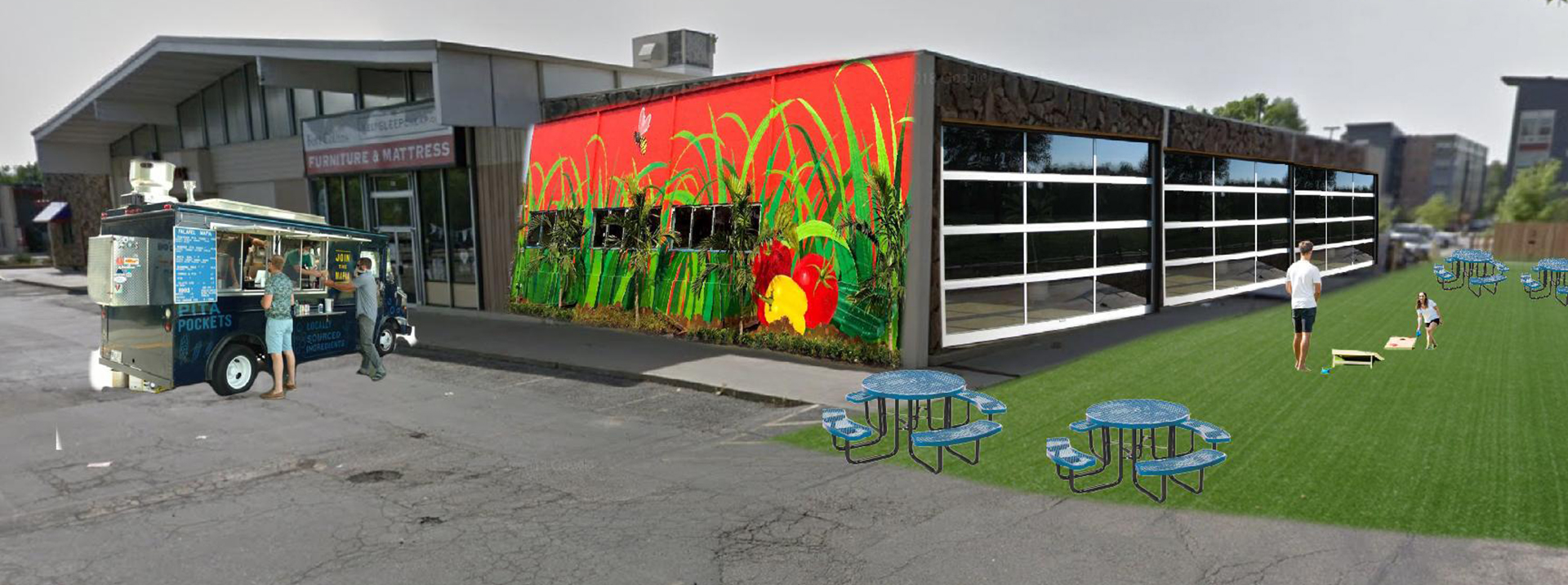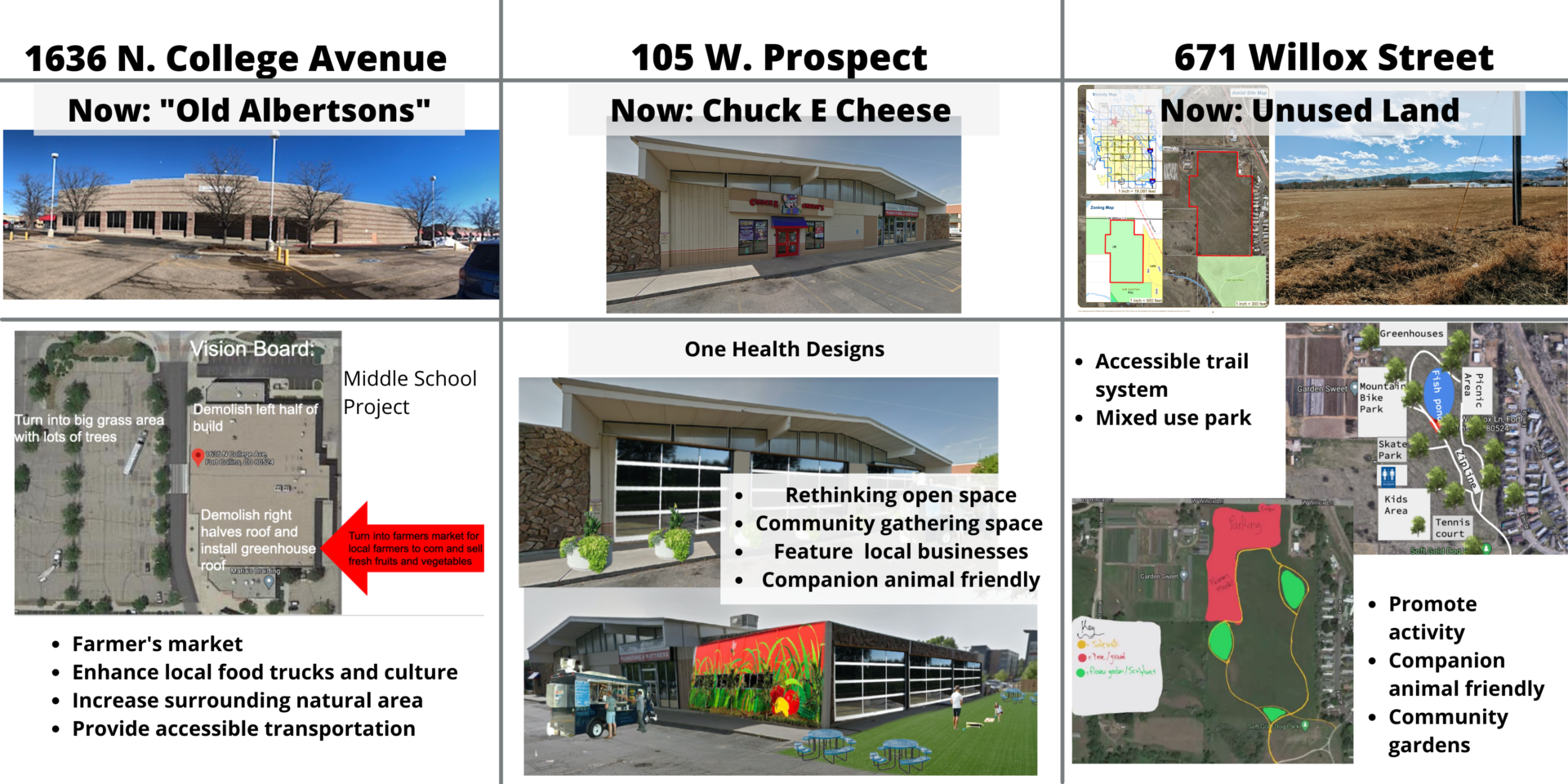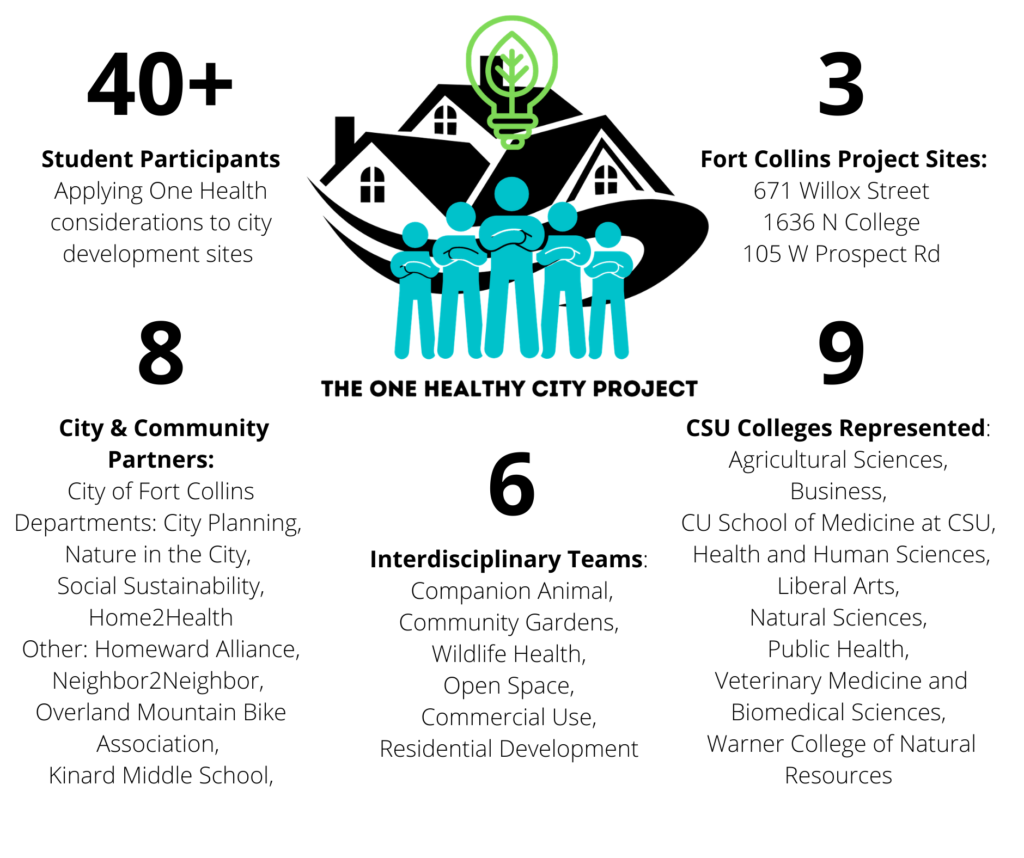
A rendering of the old Chuck E. Cheese restaurant on Prospect Road reimagined by students as part of a course at CSU.
This spring, a novel class brought together students from across Colorado State University around one issue: affordable, healthy housing in Fort Collins.
The One Healthy City Project – led by the CSU One Health Institute, the City of Fort Collins and the University of Colorado School of Medicine at CSU – used an open access model, allowing upper-level undergraduate and graduate students regardless of major or program to take the course. Lecturers represented several different colleges at CSU, city departments, and community organizations, and topics included human health disparities, carnivores in the city, designing walkable neighborhoods, and long-term city planning.
“We wanted to take something like housing that is so fundamental to our lives and examine it holistically,” notes Sue VandeWoude, director of the One Health Institute. “Using One Health as a lens to do this allows us to take a step back and look at systems-level drivers and impacts.”
One Health is a transdisciplinary concept that focuses on issues at the intersection of human, environmental, and animal health. Solving complex problems at the nexus of these three health sectors requires collaborative action. Taking a One Health approach therefore means creation of teams and processes that connect expertise in human, animal, and environmental health issues to conduct research in, and find solutions for, One Health problems.
Six teams, three sites

The One Healthy City Project brought together six teams of interdisciplinary undergraduate, graduate and professional students to evaluate scenarios that represent One Health challenges with Fort Collins housing. Three sites were examined during the 10-week course: the old Albertson’s store on North College Avenue, the old Chuck E. Cheese restaurant at Prospect Road and College, and 671 Willox Lane, a property bordered by a community garden and a mobile home park in northwest Fort Collins.
Students evaluated these sites for redevelopment, considering how the now-vacant spaces might be used for housing, commercial use, or open space. Each team tackled specific issues such as how to support wildlife, how to start and sustain community gardens, and how to ensure the health and wellbeing of companion animals at each site. The course culminated in a full-day design charrette in early April where teams presented policy proposals, design ideas and research needs discovered during the process.
The charrette was facilitated by the Institute for the Built Environment at CSU. The IBE team helped students work in Zoom breakout rooms, guiding them through the discomforts of transdisciplinary collaboration.
Recommendations for the sites were varied. Some groups advocated for mixed-use spaces, allowing once-commercial areas to have more diversity. Others wanted to return land to a more natural state, supporting the health of wildlife and native plants.
In addition to CSU students, 23 middle school students in a Global Leadership class at Kinard Middle School also participated in the One Health City Project, listening to the lectures the next day. The middle school teams were a little less forgiving about what was already in place at the sites, often opting to start anew by bulldozing parking lots and replacing them with gardens and open space.
Community partnerships key
 Community partnerships were the key to the innovative nature of the course. Kelly Smith, a senior environmental planner for the City of Fort Collins, was one of the coordinators of the class.
Community partnerships were the key to the innovative nature of the course. Kelly Smith, a senior environmental planner for the City of Fort Collins, was one of the coordinators of the class.
“The City of Fort Collins staff was excited to partner with CSU’s One Health program on the One Healthy City pilot project,” she says. “The pilot project focused on grounding One Health principles on development sites to help students conceptualize how land-use patterns could influence health outcomes for humans, animals and the environment. The diversity of speakers and students that participated brought so much value and richness to group discussions. I can see this project evolving in many ways, which speaks to endless possibilities for continued collaboration.”
Other nonprofits that participated in the course included Homeward Alliance, Neighbor2Neighbor, and the Overland Mountain Bike Association.
The course also served as a bridge to the 10 medical students completing their third year of medical school at the University of Colorado School of Medicine at CSU.
“Our medical students valued the opportunity to collaborate with students from all disciplines through this project,” according to Anuja Riles, director of health and society curriculum for the new branch. “They were able to expand their viewpoints and understanding of ‘health’ beyond the human experience, a perspective that will be invaluable to them in their careers in medicine.”
The course is just the beginning for the partnerships formed between the One Health Institute and the City of Fort Collins.
“We hope to make Fort Collins the first ‘One Healthy City,’ a place that values the health of its people, animals, and environment with the same veracity,” says VandeWoude. “The best way to do that is to expand our work together as a community.”